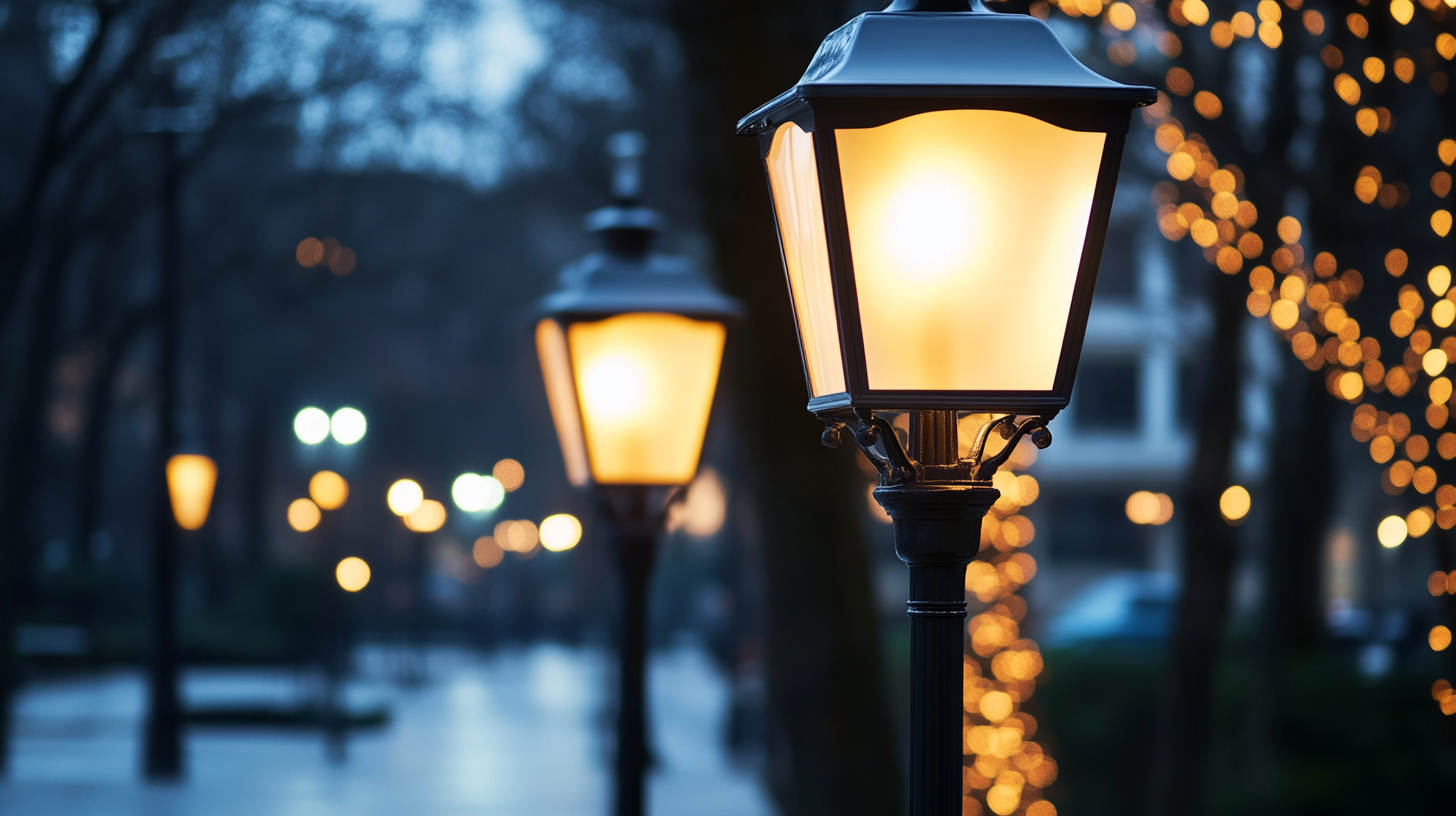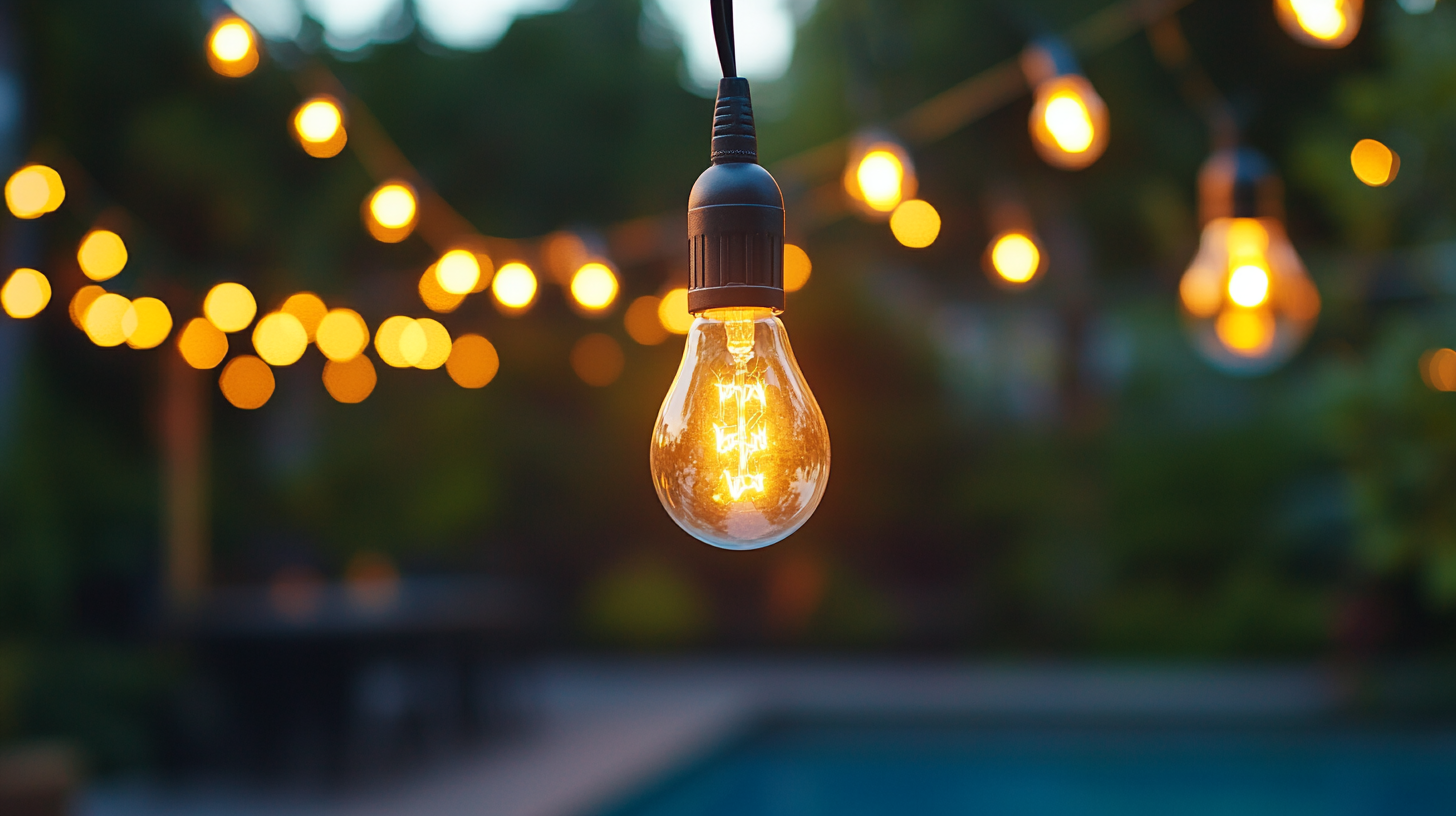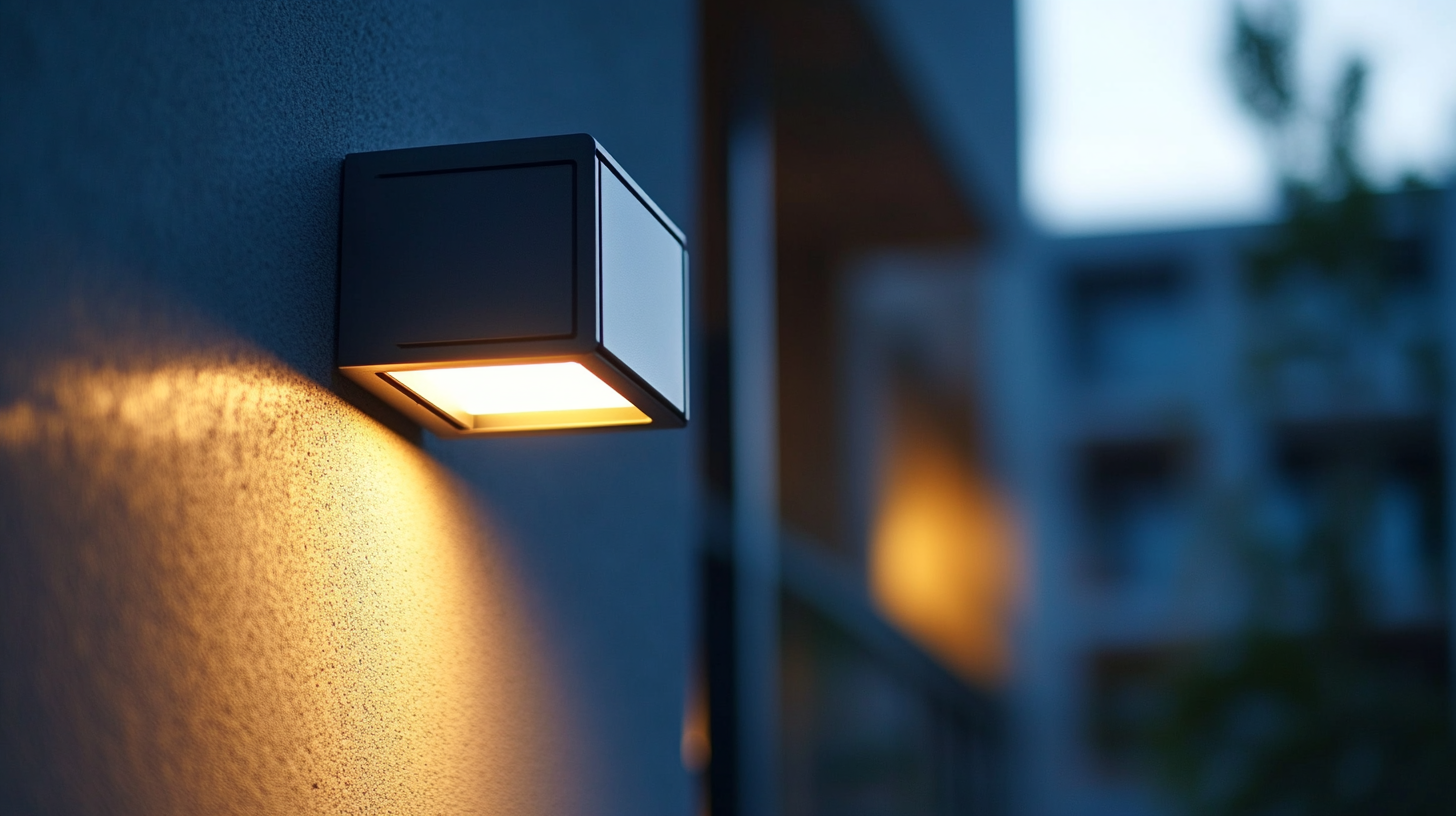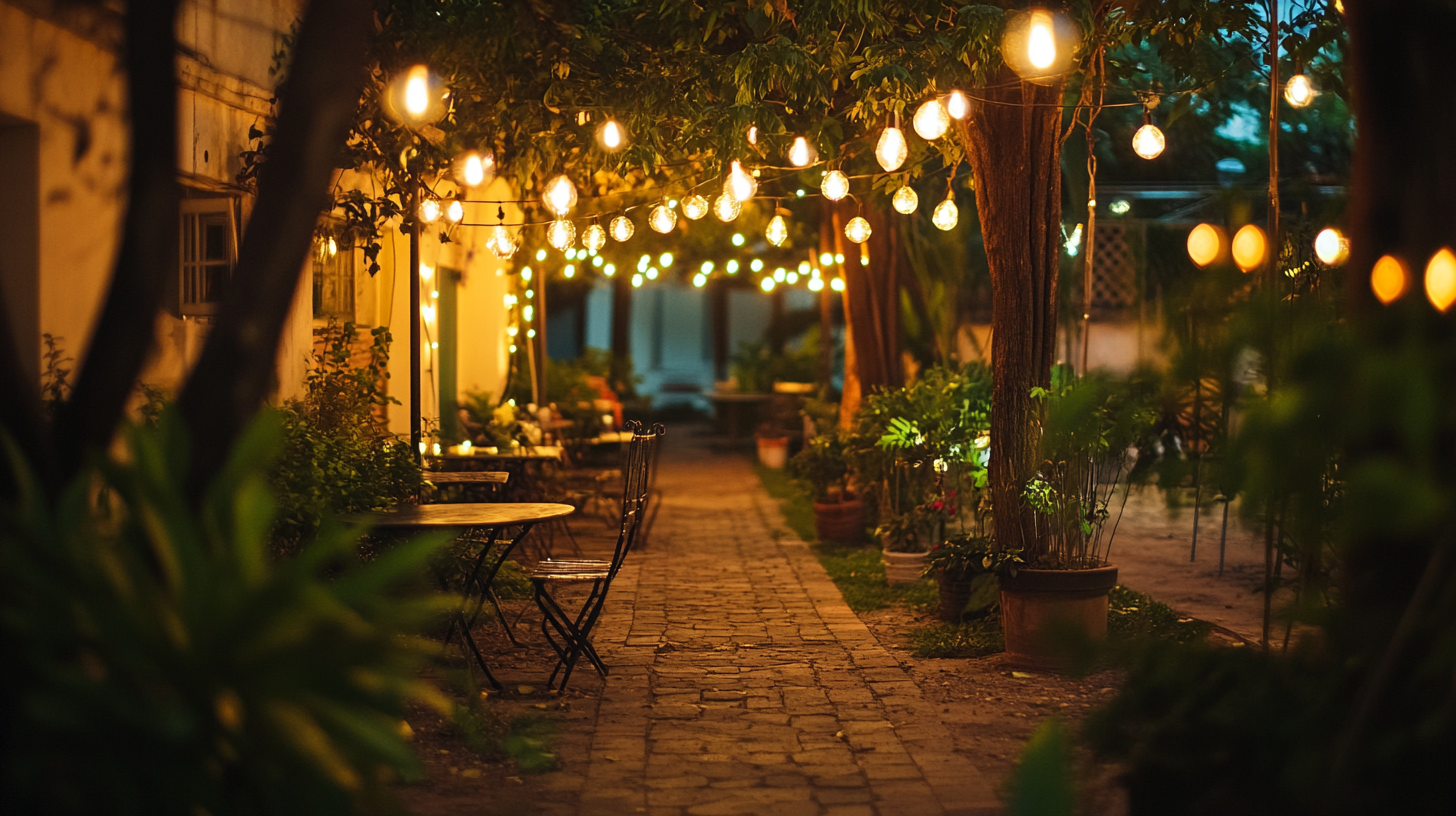Essential Guide: Factors to Consider When Sourcing Low Voltage Outdoor Lighting Solutions
As the demand for eco-friendly and energy-efficient solutions continues to rise, Low Voltage Outdoor Lighting has emerged as a compelling choice for both residential and commercial applications. According to a report by the U.S. Department of Energy, outdoor lighting accounts for nearly 30% of all electricity used for lighting purposes, highlighting the need for more sustainable alternatives. The advantages of low voltage systems, including reduced energy consumption, increased safety, and enhanced aesthetic appeal, make them an attractive option for those looking to illuminate outdoor spaces effectively while being environmentally conscious.
In the ever-evolving landscape of outdoor lighting design, various factors come into play when sourcing Low Voltage Outdoor Lighting solutions. A recent study by the National Electrical Manufacturers Association indicates that the market for outdoor lighting is projected to grow significantly, driven by innovations in technology and design. As consumers and property owners increasingly prioritize efficiency and durability, understanding the key factors such as installation requirements, product lifespan, and energy performance becomes vital. This essential guide aims to navigate these considerations, empowering you to make informed decisions that will not only enhance your outdoor areas but also contribute to broader sustainability goals.

Key Considerations for Selecting Low Voltage Outdoor Lighting Systems
When selecting low voltage outdoor lighting systems, several critical factors come into play that can significantly impact both functionality and aesthetics. One of the foremost considerations is the lumens output required for the space. According to the Illuminating Engineering Society, a well-lit path or garden typically requires about 100 lumens per square meter. Assessing the specific lighting needs of your outdoor areas ensures the selection of appropriate fixtures and bulb types that can provide adequate illumination while enhancing safety. Another key factor is energy efficiency, especially given the increasing focus on sustainability. Low voltage outdoor lighting systems are often favored for their reduced energy consumption compared to traditional lighting solutions. A report from the U.S. Department of Energy indicates that LED lights, commonly used in low voltage systems, consume up to 75% less energy than incandescent bulbs, making them a favored choice for eco-conscious consumers. Not only do these systems lower electric bills, but they also minimize environmental impact, aligning with contemporary energy-saving initiatives. Furthermore, the durability and weather resistance of lighting fixtures should not be overlooked. Outdoor environments expose lighting systems to harsh conditions, making it vital to select fixtures that are rated for such exposure. The National Electrical Manufacturers Association (NEMA) provides guidelines on fixture ratings, indicating that for outdoor use, lighting fixtures should ideally have a minimum IP65 rating to withstand dust and moisture. By prioritizing these considerations, homeowners can ensure a successful installation that combines both performance and longevity.

Understanding Voltage Levels: Benefits of Low Voltage vs. Line Voltage Lighting
When considering outdoor lighting solutions, the choice between low voltage and line voltage systems is crucial for both efficiency and safety. Low voltage lighting operates at 12 to 24 volts, which significantly reduces the risk of electrical shock and makes installation much simpler and safer. According to recent reports, the proliferation of low-voltage systems aligns well with sustainability goals, particularly as electric vehicle (EV) adoption grows. As EV usage increases, the demand for reliable, efficient outdoor lighting systems will likely rise, making low voltage solutions all the more appealing for integration into the evolving energy landscape.
The energy efficiency of low voltage lighting is also noteworthy. Innovations in technology have made it possible for light-emitting diodes (LEDs) to operate at ultralow voltages, demonstrating light emission at record-low levels of 36–60% of their bandgaps. This results in substantial energy gains, emphasizing the advantages of low voltage lighting not only in terms of electrical safety but also in energy consumption. For instance, these LEDs exhibit an impressive energy gain of 0.6–1.4 eV per photon, making them an environmentally friendly choice that contributes to reduced energy costs for homeowners and businesses alike.
Furthermore, investments in low voltage infrastructure, such as the $22 million project in Accra, Ghana, highlight a growing trend towards enhancing electricity grids to support low voltage applications. By deploying new transformers and reducing circuit lengths, these initiatives bolster the reliability and efficiency of outdoor lighting systems. Such advancements in low voltage technology not only improve performance but also offer aesthetic and safety benefits, making them an essential consideration for any outdoor lighting project.

Assessing Energy Efficiency: Industry Standards and Performance Metrics
When sourcing low voltage outdoor lighting solutions, one of the primary considerations is energy efficiency. It is essential to understand the industry standards that govern the energy performance of these lighting systems. Look for products that comply with guidelines set by organizations like the Department of Energy (DOE) and the Energy Star program, which ensure that the lighting solutions you choose minimize energy consumption without compromising brightness or quality. These standards often provide clear metrics on watts per lumen, which is crucial for evaluating how efficiently a product uses electricity relative to the light output it generates.
Another key performance metric to consider is the lifespan of the lighting fixtures and the type of technology used, such as LED versus traditional incandescent bulbs. LED lights are far more energy-efficient, consuming significantly less power and lasting up to 25 times longer than incandescent options. This not only reduces energy bills but also decreases the frequency of replacement, leading to lower long-term maintenance costs. Additionally, consider fixtures that offer smart technology integrations, allowing for automated dimming or scheduling, which further enhances energy savings and overall performance in outdoor settings.
Evaluating these performance metrics not only helps in selecting energy-efficient products but also contributes to sustainability efforts at a larger scale. By prioritizing energy-efficient solutions in low voltage outdoor lighting, consumers can play a pivotal role in reducing their carbon footprint while ensuring a well-lit and safe environment.

Durability and Weather Resistance: Choosing Materials for Outdoor Environments
When selecting low voltage outdoor lighting solutions, durability and weather resistance are critical factors that cannot be overlooked. Outdoor environments expose fixtures to various elements including rain, snow, extreme temperatures, and UV radiation. Therefore, the materials chosen for these lighting solutions must be able to withstand such conditions while maintaining functionality and aesthetics.
Metals such as aluminum or stainless steel are popular choices for outdoor lighting due to their strength and corrosion resistance. Aluminum, being lightweight and resistant to rust, is an excellent option for fixtures that need to endure harsh weather without becoming cumbersome. On the other hand, stainless steel offers superior durability, making it ideal for coastal areas where saltwater can exacerbate rust. Additionally, treatments or coatings can enhance these metals’ weather resistance, prolonging their lifespan and keeping them looking new.
Furthermore, plastics and composites can also be viable materials for outdoor lighting fixtures. High-quality weather-resistant plastics are designed to endure UV exposure and prevent fading, while composite materials can combine the best characteristics of plastics and metals, offering high durability without the weight. Choosing the right material not only influences the longevity of the lighting solution but also impacts installation and maintenance, making it essential to consider the specific environmental challenges faced in your area.
Installation and Maintenance: Cost Implications and Best Practices
When it comes to low voltage outdoor lighting solutions, both installation and maintenance play critical roles in ensuring long-term functionality and cost-effectiveness. One of the first aspects to consider during installation is the layout and design of the lighting system. Proper planning can significantly reduce costs in the future, as strategic placement minimizes the number of fixtures needed while maximizing illumination. Additionally, choosing the right materials and fixtures can prevent frequent replacements and repairs, making the initial investment more worthwhile.
Maintenance of low voltage outdoor lighting also carries important cost implications. Regularly inspecting and cleaning fixtures helps maintain their efficiency and longevity. It's crucial to establish a routine maintenance schedule, which may include checking for damaged wiring, replacing burnt-out bulbs, and ensuring that connections are secure. When fixtures are kept in optimal condition, it minimizes the risk of larger, costly repairs down the line. Furthermore, employing best practices such as utilizing timers and sensors can enhance energy efficiency, ultimately leading to decreased electricity bills and a more sustainable lighting solution.
By giving due consideration to the installation process and making informed maintenance choices, homeowners and businesses can ensure that their low voltage outdoor lighting systems remain reliable and cost-effective for years to come.
